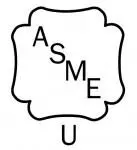Oil mist eliminators are an essential component of industrial facilities that generate oil mist, fumes, or vapors. These machines help to ensure that the air quality in the facility is safe for workers and the environment. A redundant blower is an important feature of some oil mist eliminators, which helps to increase the efficiency and reliability of the machine. In this article, we will discuss the role of the redundant blower in an oil mist eliminator and how it contributes to the effectiveness of the equipment.
What is a Redundant Blower in an Oil Mist Eliminator?
A redundant blower is a type of blower that is used in some oil mist eliminators. It is an additional blower that is installed in the system to provide a backup in case the primary blower fails. The redundant blower can be automatically switched on if the primary blower malfunctions, ensuring that the oil mist eliminator continues to function effectively.
The Role of the Redundant Blower in an Oil Mist Eliminator
The redundant blower plays a critical role in the functioning of an oil mist eliminator. Its primary role is to provide a backup in case the primary blower fails. Here are some of the key ways in which the redundant blower contributes to the effectiveness of an oil mist eliminator:
Improved reliability
The redundant blower helps to ensure that the oil mist eliminator continues to function even if the primary blower fails. This helps to improve the reliability of the equipment, reducing the risk of downtime and the associated costs.
Increased efficiency
The redundant blower can also help to increase the efficiency of the oil mist eliminator. If the primary blower fails, the redundant blower can be switched on automatically, ensuring that there is no interruption in the airflow. This helps to maintain the effectiveness of the equipment, even in the event of a malfunction.
Enhanced safety
The redundant blower also plays a crucial role in ensuring the safety of workers in the facility. If the primary blower fails, there is a risk of oil mist and fumes accumulating in the air, which can be hazardous to health. The redundant blower helps to prevent this by ensuring that the air quality remains safe and healthy for workers.
Conclusion
A redundant blower is an important feature of some oil mist eliminators, which helps to increase the efficiency and reliability of the equipment. Its primary role is to provide a backup in case the primary blower fails, ensuring that the oil mist eliminator continues to function effectively. By improving reliability, increasing efficiency, and enhancing safety, the redundant blower is a critical component of any industrial facility that generates oil mist, fumes, or vapors.









